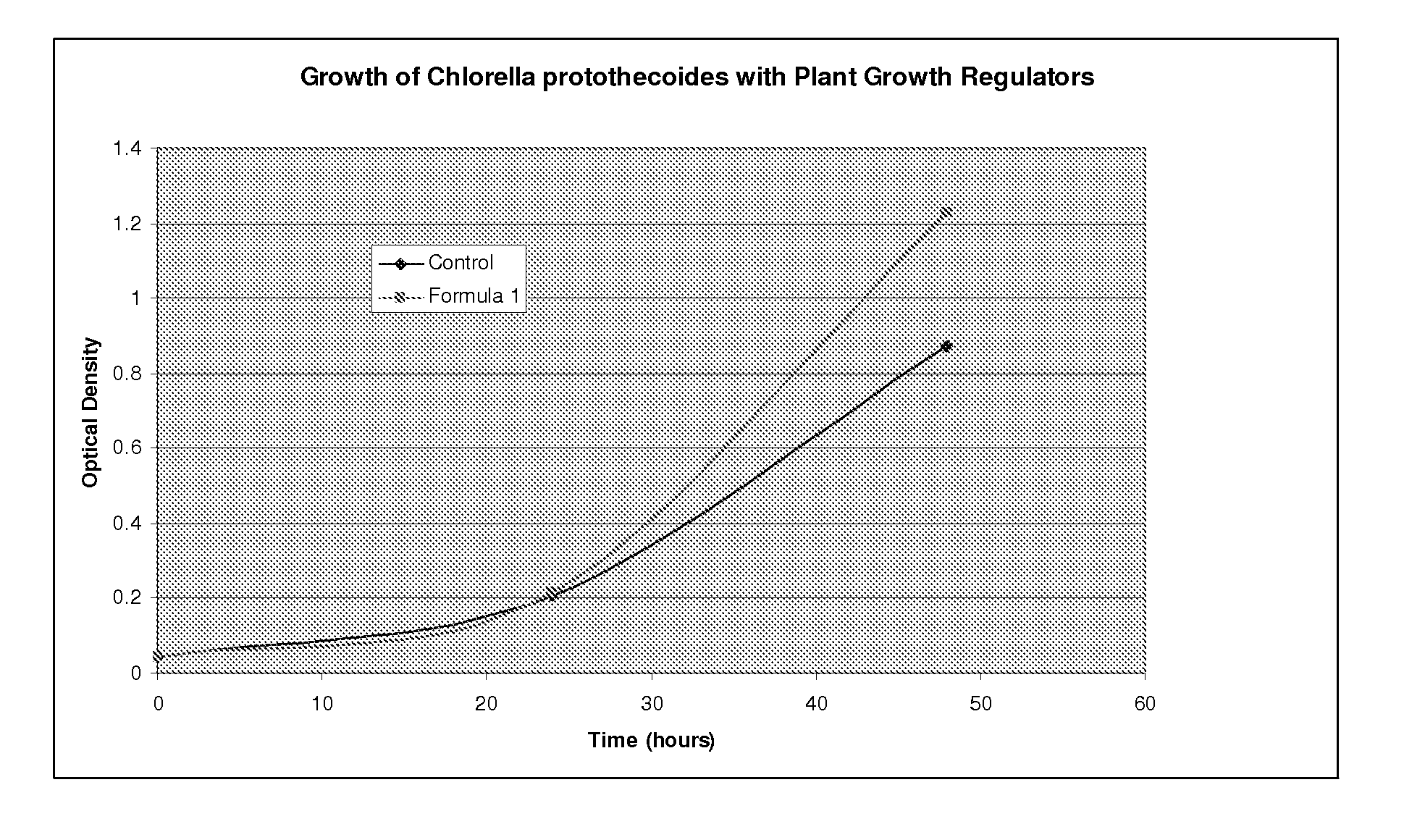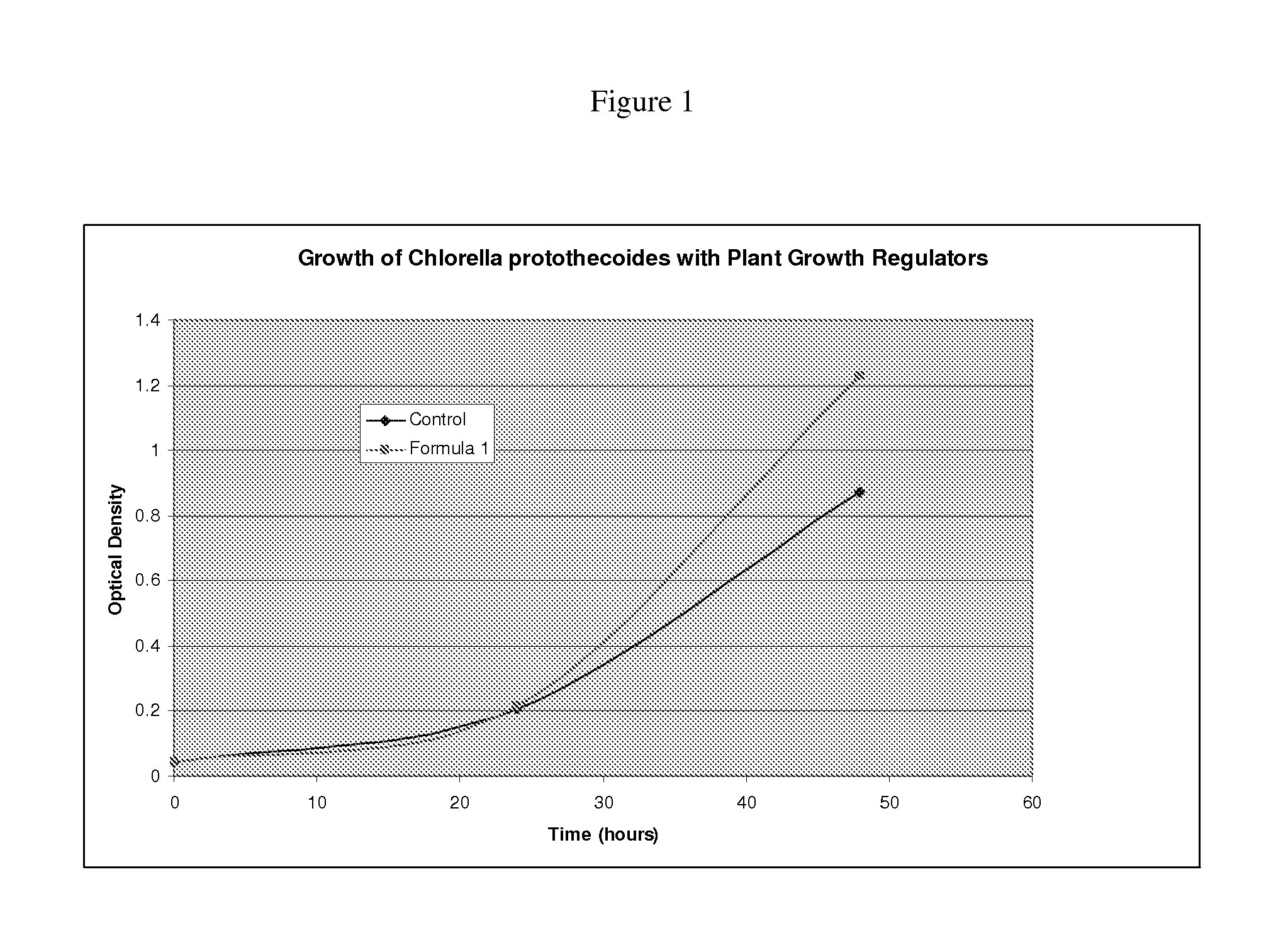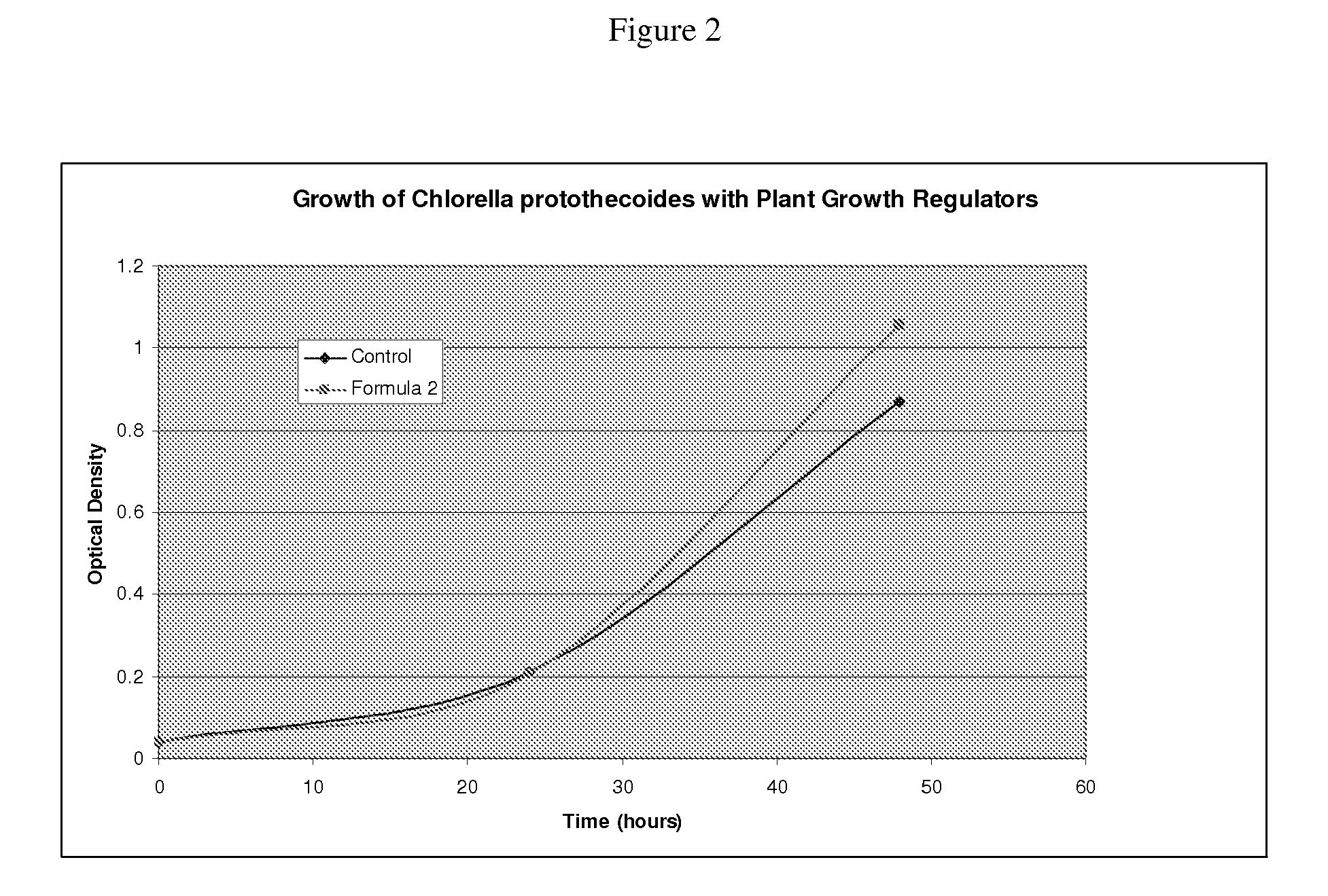Optimization of Algal Product Production through Uncoupling Cell Proliferation and Algal Product Production
- Summary
- Abstract
- Description
- Claims
- Application Information
AI Technical Summary
Benefits of technology
Problems solved by technology
Method used
Image
Examples
example 1
Comparison of the Growth of Chlorella vulgaris in a Stage 1 Heterotrophic Reactor and a Stage 1 Autotrophic Reactor under Static and Shaken Growth Conditions
[0147]Glass bioreactors (triplicate) were sterilized and filled with either a sterile autotrophic growth medium (Bristol's Medium) or a sterile heterotrophic growth medium (Bristol's medium modified with 1 g / L yeast extracta and 5 g / L glucose). Three bioreactors were then left unagitated and three were agitated gently to facilitate mixing. All cultures were illuminated (27-30 uEinsteins / cm2) on a 16 / 8 light / dark cycle. At 7 days, the cells were harvested, and dry weights, cell numbers per mL, and total chlorophyll were determined.
[0148]An exemplary Bristol's medium is listed below:
#ComponentAmountStock SolutionFinal Concentration1NaNO3 (Fisher BP360-500)10 mL / L10 g / 400 mL dH2O 2.94 mM2CaCl2•2H2O (Sigma C-3881)10 mL / L1 g / 400 mL dH2O0.17 mM3MgSO4•7H2O (Sigma 230391)10 mL / L3 g / 400 mL dH2O 0.3 mM4K2HPO4 (Sigma P 3786)10 mL / L3 g / 400 ...
example 2
Comparison of the Growth of Ankistrodesmus braunii in a Stage 1 Heterotrophic Reactor and a Stage 1 Autotrophic Reactor under Static and Shaken Growth Conditions
[0156]Glass bioreactors (triplicate) were sterilized and filled with either a sterile autotrophic growth medium (Bristol's Medium) or a sterile heterotrophic growth medium (Bristol's medium modified with 1 g / L yeast extracta and 5 g / L glucose). The bioreactors were inoculated with Ankistrodesmus braunii and incubated as follows. Three bioreactors were left unagitated and three were agitated gently to facilitate mixing. All cultures were illuminated (27-30 uEinsteins / cm2) on a 16 / 8 light / dark cycle. At 7 days the cells were harvested, and dry weights, cell numbers per mL, and total chlorophyll were determined.
[0157]The lighting conditions used herein may be generally applicable for photoheterotrophic growth in the instant invention.
[0158]In the table below it is evident that heterotrophic growth led to significant and dramati...
example 3
Comparison of the Growth of Chlorella protothecoides with or without Certain Combination of Growth Factors
[0159]The stock formula used was 0.25 g kinetin, 0.25 g 6-BA, 0.5 g NAA, 0.5 g GA3, 1.0 g Vitamin B1, 1.0 L dH2O. 19.5 nL were added to 250 mL of HGM (see table below) to create formula 2. Flasks were inoculated with Chlorella protothecoides to give a starting optical density of 0.04 absorbance units. The flasks were placed on a shaker at 125 rpm under heterotrophic (dark) conditions. Temperature was maintained at about 23° C. Optical densities were measured daily. Results are summarized in FIG. 1.
TABLE 1Heterotrophic Growth Medium (HGM)StockAmountStock SolutionFinalSolutionComponent(L−1)Conc. (400 mL−1)Concentration1NaNO330ml10 g 8.82 mM2CaCl2•(2H2O)30ml1 g0.17 mM3MgSO4•(7H2O)30ml3 g0.30 mM4K2HPO430ml3 g0.43 mM5KH2PO430ml7 g1.29 mM6NaCl30ml1 g0.43 mM7Trace Metal (sol)18mlSee note 18Yeast Extract4gNA0.4%(Bacto)9C6H12O620gNA2.0%Note 1:NaEDTA•2H2O, 075 g / L; FeCl3•6H2O, 0.097 g / L; ...
PUM
 Login to View More
Login to View More Abstract
Description
Claims
Application Information
 Login to View More
Login to View More - R&D
- Intellectual Property
- Life Sciences
- Materials
- Tech Scout
- Unparalleled Data Quality
- Higher Quality Content
- 60% Fewer Hallucinations
Browse by: Latest US Patents, China's latest patents, Technical Efficacy Thesaurus, Application Domain, Technology Topic, Popular Technical Reports.
© 2025 PatSnap. All rights reserved.Legal|Privacy policy|Modern Slavery Act Transparency Statement|Sitemap|About US| Contact US: help@patsnap.com



